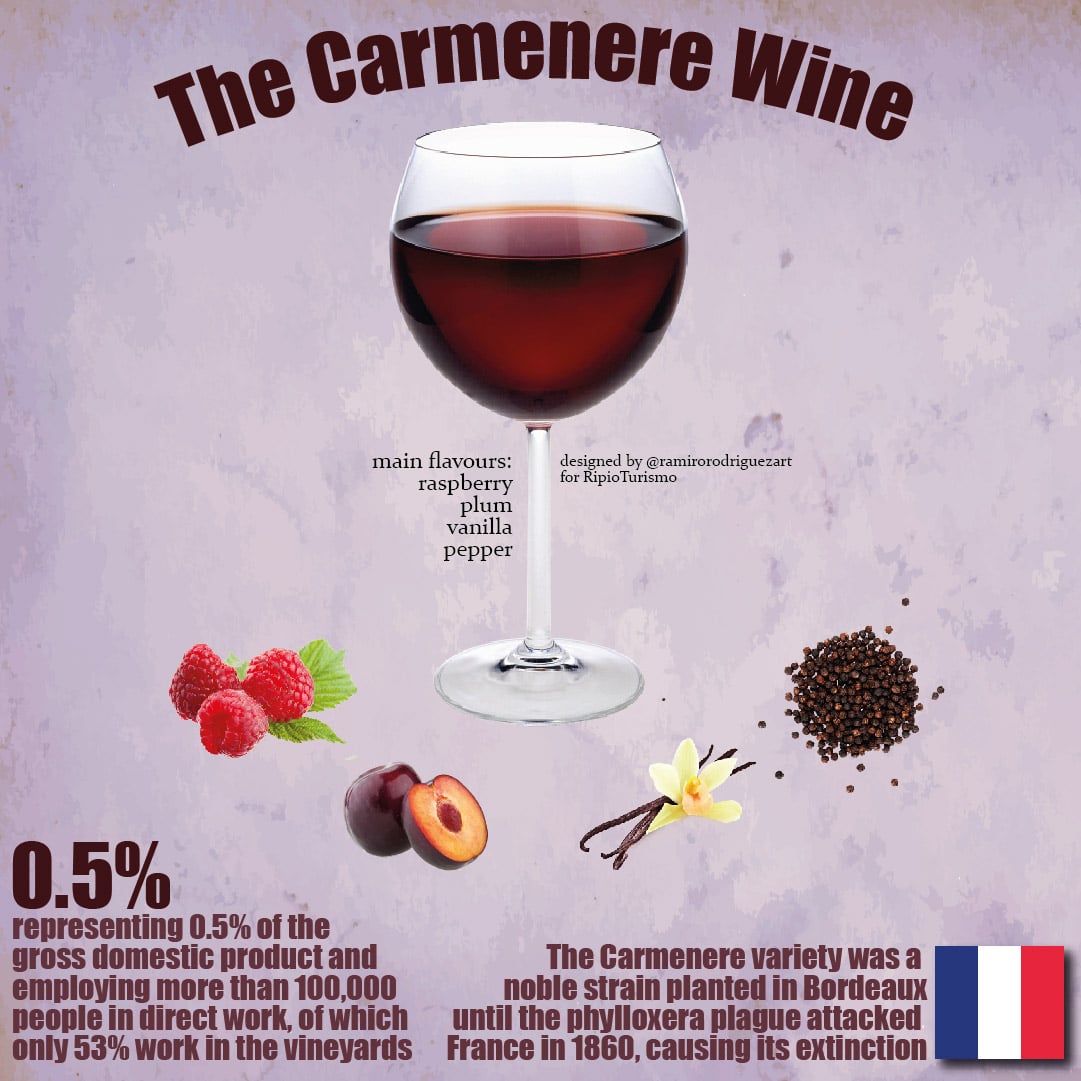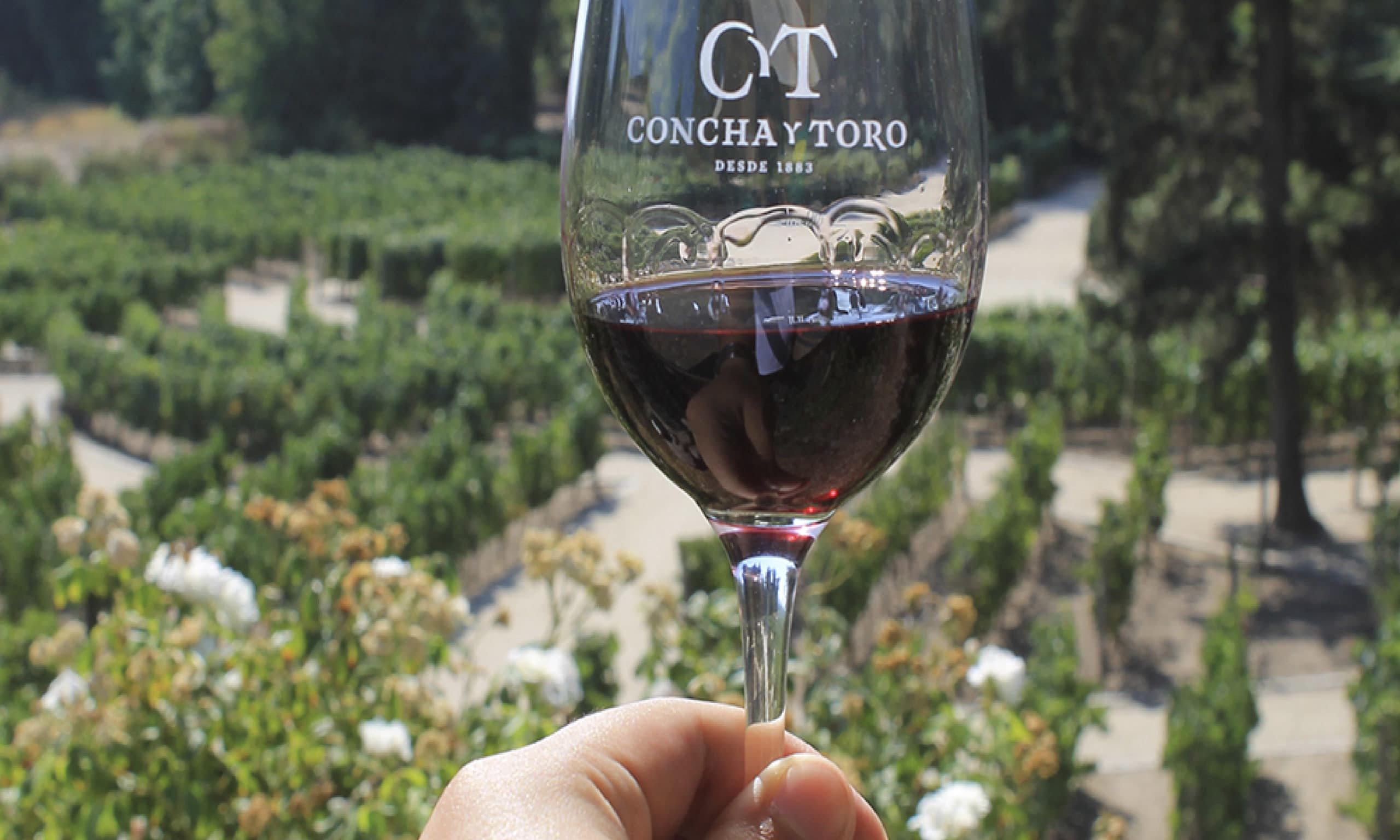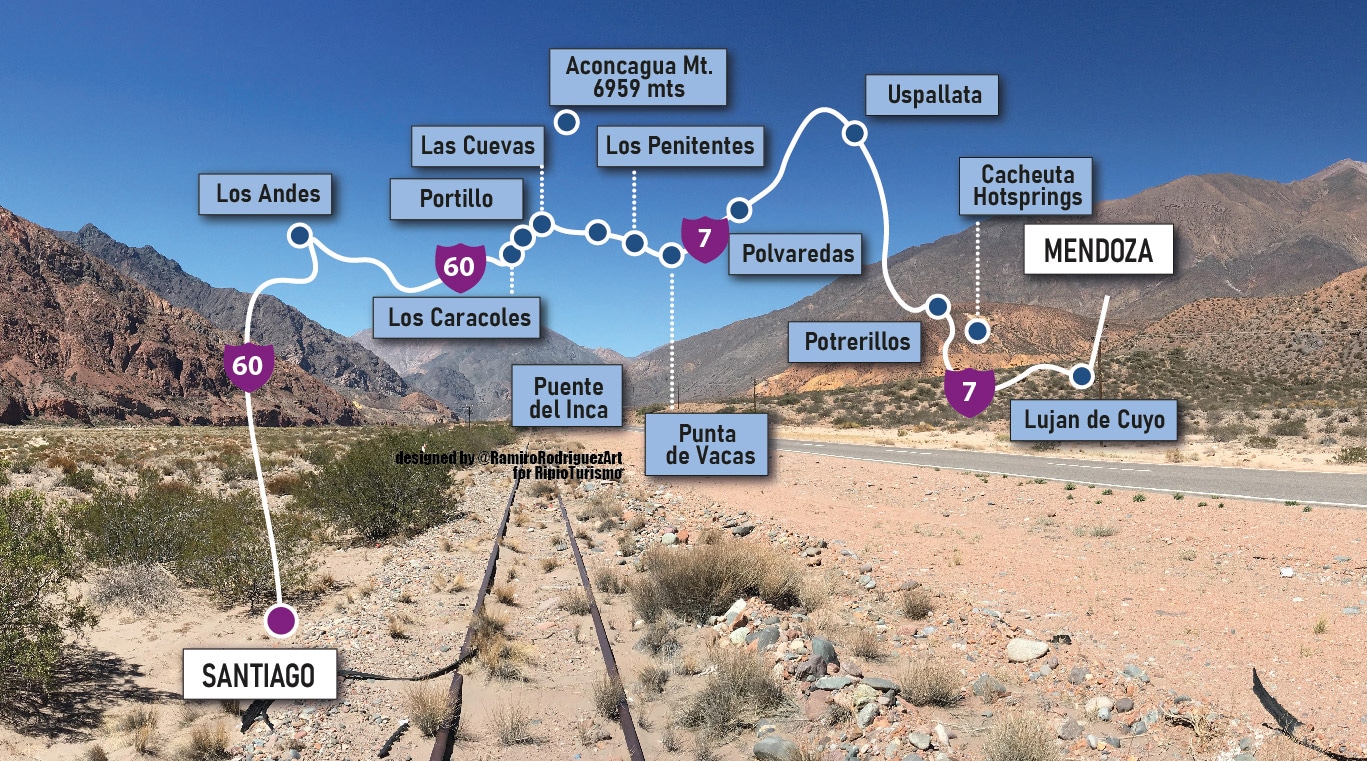The Carmenere: The chilean wine
Carmenere (French for carménère) is a grape variety originally planted in the Médoc region of Bordeaux, France, where it is used to produce dark red wines and is often used for blending wines with petit verdot. It is a member of the cabernet family. The name carmenere comes from the French word carmin, in reference to the carmine color, due to the color of the foliage before the leaf falls. The grape is also known as grande vidure, a synonym used historically in Bordeaux, 2 although currently European Union legislation prohibits imports from Chile bearing that name. Carmenere is considered one of the six original red grapes Bordeaux, along with Cabernet Sauvignon, Cabernet Franc, Merlot, Malbec and Petit Verdot.
Today it is not common in France and the largest plantations of this variety are in Chile, South America. In 2009 there were 8,800 hectares of this variety in the Chilean Central Zone. Chile produces most of the carmenere wines available today and the Chilean wine industry is growing, so experiments are being carried out with the potential that they could have the wines mixed with this grape, especially with the Cabernet Sauvignon.

The Carmenere: a bit of history
It is one of the oldest European varieties. Carmenere is believed to be the predecessor of other more well-known varieties. Some consider it “a very widespread clone of Cabernet Sauvignon.” The name of the variety may be a nickname such as Grande Vidure, which was used in Bordeaux to define a Cabernet Sauvignon clone that was previously it was believed to be the strain from which all Bordeaux red grapes came. It is also believed that the carmenere could have been the biturica, a vine from ancient Rome that was called by the name of Bordeaux at that time.8 According to Pliny the Elder, the biturica originated in the Iberian peninsula (today Spain and Portugal). At present it is mixed with the sangiovese in Tuscany under the name of predicato di Biturica.
The known origins of carmenere are in the Médoc region of Bordeaux. There were also many plantations in the Graves region of Bordeaux, until the vines suffered powdery mildew. It is almost impossible to find carmenere wines in France because of that the phylloxera plague of 1867, which destroyed almost all the vineyards in Europe, affecting mainly the carmenere strain to such an extent that for years it was believed to be extinct.
When the vineyards were replanted, the vintners were unable to replant the carmenere because it was so difficult to find and harder to grow than any other common Bordeaux grape. The region’s humidity and cold spring climate led to the coulure, ‘somewhat endemic to certain vines in climates that have marginal climates, sometimes cold, and humid springs ”, which prevents the flowering of the vine shoots. The yields were lower than those of other varieties and the crops were rarely healthy and consequently the winegrowers chose varieties that were more versatile and less susceptible to coulure to replant their vineyards and the carmenere plantation was progressively abandoned.
The Carménère in Chile
Far from being extinct, in recent years carmenere has flourished in some areas outside of France. In Chile, winegrowers almost inadvertently preserved the variety for 150 years because of its similarity to Merlot. Chilean winegrowers imported carmenere cuttings from Bordeaux during the 19th century, where it was often mistaken for merlot vines. They structured their wine industry in the French style and in the 1850s the Bordeaux cuttings, among which were those of Carmenere, were planted in valleys around Santiago de Chile. Thanks to the little rainfall in Chile during its season of growth and the natural protection of the boundaries, the winegrowers produced healthy crops and the carmenere was not affected by the phylloxera. For much of the 20th century, the carmenere had gone unnoticed, collected and processed together with the merlot (reaching probably 50% of the total volume of the harvest), giving Chilean merlot wine markedly different properties from the merlot that is produced. produced elsewhere. Chilean winegrowers believed that this vine was a clone of merlot and was known as merlot selection or merlot peumal (by Peumo, in Chile). In 1994, a researcher from the faculty of oenology de Montpellier found that “an early maturing vine was Bordeaux carmenere, not merlot.” The Chilean Ministry of Agriculture officially recognized carmenere as a distinct variety in 1998. Today, carmenere grows mainly in the valleys of Colchagua and Rapel, and in the province of Maipo
Carménère, the emblematic wine of Chile
The Chilean Carménère has become the emblem of Chile, as it is one of the few places where it is grown. For this reason, the valleys of Chile, especially the Colchagua Valley, where 50% of the national production is found, are recognized worldwide as the place where Carménère re-emerged, from which a wine of intense color, with good acidity and a little sweetness.
Colchagua Valley Vineyards: location map

Book an excursion to enjoy the wines of Chile in the Colchagua Valley
From Santiago, you can book the excursion to Santa Cruz and the Colchagua Valley
Wine Tours in Chile and Argentina
Wine Tours? If you´re looking for Wine Tours, we have a complete list of amazing wine tours in Chile and Argentina. Check more!
Visiting Santiago? check our best tours to enjoy Chile
#353 – Santiago, Atacama Desert & Easter Island – 9 nights 
#351 – Santiago, Torres del Paine and Atacama Desert – 9 nights 
#363 – Santiago, Atacama, Torres del Paine & Skorpios III Cruise – 12 nts 
#360 – Chilean Patagonia and Atacama Desert – 12 nts 
Tours in Chile with Argentina, Peru, and other destinations in Chile
It´s a nice list of four tours including the Santiago, Valparaiso and Viña del Mar in the itinerary. But, a great idea is to combine these places, with other destinations in Chile and why not… Argentina and Peru. Check some great options below:
#1052 – From Rio to Santiago via Iguazu, Buenos Aires and Atacama – 18 nts 
#1081 – Colorful Argentina, Chile & Peru – 17 nights 
#1004 – Argentina & Chile in 12 nights – Option IV – 12 nts 
#1090 – The Great tour of South America – 26 nights 
More tours to visit Chile
Want to see more tours to visit Chile? Check our complete list of tours to visit Chile
For more information, just contact us at info@ripioturismo.com
Thank you!















